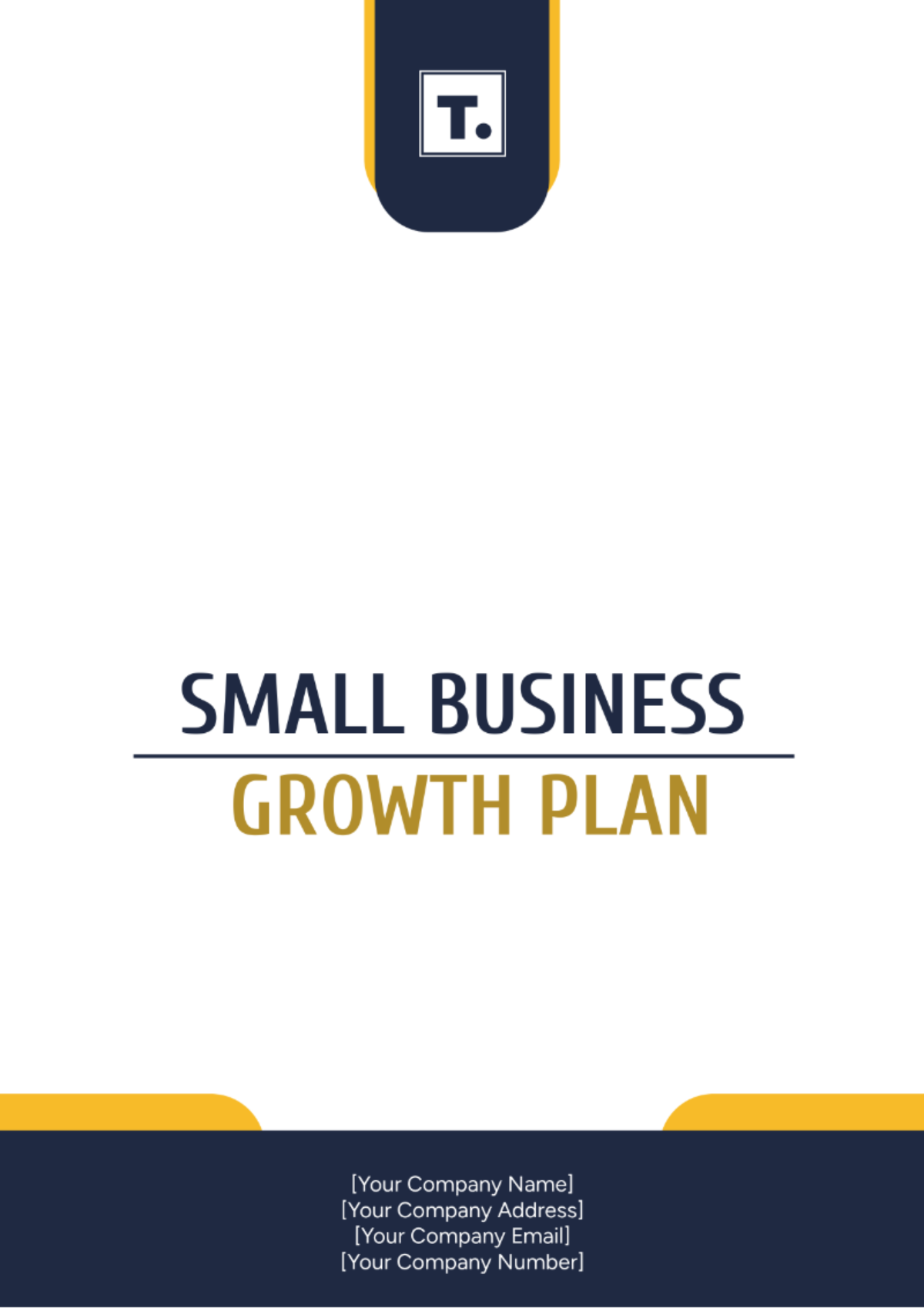Free Small Business Growth Plan

_____________________________________________________________________________________
_____________________________________________________________________________________
Executive Summary
[Your Company Name] is committed to achieving sustainable growth by focusing on increasing revenue, expanding market reach, and enhancing product offerings. This plan outlines our strategic objectives, target markets, and key initiatives for the next three years.
Business Overview
Company Name | [Your Company Name] |
Owner/CEO | [Your Name] |
[Your Email] | |
Address | [Your Company Address] |
Website | [Your Company Website] |
_____________________________________________________________________________________
I. Objectives
Increase Revenue and Profitability
Target a 20% annual revenue growth.
Boost profit margins by 10% with cost optimization and strategic pricing.
Expand Market Reach
Enter three new geographic markets.
Increase market share in existing markets by targeting new customer segments such as young professionals and small businesses.
Enhance Product/Service Offerings
Develop two new products to meet emerging customer needs.
Improve existing products based on customer feedback and market trends.
Strengthen Brand Presence
Boost brand awareness through comprehensive marketing campaigns, social media engagement, and public relations efforts.
Enhance customer engagement and retention by improving customer service and implementing loyalty programs.
Improve Operational Efficiency
Streamline processes to reduce costs by 15%.
Implement advanced technologies like CRM software and automation tools to improve business operations.
Expand Human Resources
Recruit 10 skilled employees to support growth initiatives.
Invest in training programs to enhance the productivity and skills of current staff.
II. Market Analysis
Industry Overview
The retail industry is experiencing steady growth, driven by increasing consumer spending and a shift towards e-commerce.
Target Market
Young professionals aged 25-35, small businesses, located in urban areas, looking for affordable and high-quality products.
Competitive Analysis
Key competitors include Competitor A, Competitor B, and Competitor C, all of which have strong online presences and diverse product lines.
Market Trends
Current trends include a rise in online shopping, personalized customer experiences, and a growing demand for sustainable products.
III. Growth Strategies
Market Penetration
Increase sales in existing markets through promotional activities, discounts, and customer loyalty programs.
Market Development
Expand into new markets by identifying potential regions, conducting market research, and establishing distribution channels.
Product Development
Innovate and introduce new products by investing in R&D, analyzing customer feedback, and monitoring industry trends.
Diversification
Explore new business opportunities by entering related industries, forming strategic alliances, and launching complementary products/services.
IV. Financial Plan
"Title: Financial Plan for Growth Business Plan"
Revenue Projections
Year 1: $1.5 million
Year 2: $1.8 million
Year 3: $2.2 million
Budget Allocation
Marketing: 30% of Budget
R&D: 20% of Budget
Operations: 50% of Budget
Funding Requirements
Amount Needed: $500,000
Purpose: To support market expansion, product development, and technology integration
Potential Sources: Bank loans, private investors, and government grants
V. Risk Management
Risk Identification
Potential risks include market saturation, economic downturns, and supply chain disruptions.
Mitigation Strategies
Actions to minimize risks include diversifying suppliers, maintaining a flexible budget, and conducting regular market analysis.
Contingency Planning
Backup plans include establishing emergency funds, developing alternative marketing strategies, and creating a crisis management team.
VI. Implementation Timeline
"Title: Timeline for Growth Business Plan"
Q1 Year 1: Launch new marketing campaigns, begin market research for new regions, and recruit initial new hires.
Q2 Year 1: Develop new products, integrate CRM software, and start loyalty programs.
Q3 Year 1: Enter the first new geographic market, optimize supply chain processes, and conduct staff training sessions.
Q4 Year 1: Review and adjust strategies based on performance, prepare financial reports, and plan for Year 2 initiatives.
Year 2 and Beyond: Continue market expansion, introduce additional new products, and further improve operational efficiencies.
VII. Monitoring and Evaluation
Performance Metrics
KPIs to track progress include monthly revenue, customer acquisition rates, profit margins, and employee productivity.
Review Frequency
Monthly reviews to assess short-term goals, quarterly reviews for strategic adjustments, and annual reviews for long-term planning.
Reporting
Progress will be reported to stakeholders and management teams through detailed reports and presentations.
_____________________________________________________________________________________
We are positioned for expansion by implementing strategic actions that will increase revenue, broaden our market reach, enhance product offerings, and improve operational effectiveness. By following this strategy, we intend to accomplish our long-term objectives and secure a more robust position in the market.
- 100% Customizable, free editor
- Access 1 Million+ Templates, photo’s & graphics
- Download or share as a template
- Click and replace photos, graphics, text, backgrounds
- Resize, crop, AI write & more
- Access advanced editor
Unlock your business potential with Template.net's Small Business Growth Plan Template. Fully customizable and editable, this template adapts to your needs effortlessly. Easily editable in our AI Tool, it simplifies strategic planning, ensuring a tailored growth roadmap for your business success.
You may also like
- One Page Business Plan
- Coffee Shop Business Plan
- Restaurant Business Plan
- Food Business Plan
- Real Estate Business Plan
- Executive Summary Business Plan
- Cover Page Business Plan
- Nonprofit Business Plan
- Daycare Business Plan
- Construction Business Plan
- Startup Business Plan
- Medical Business Plan
- Bakery Business Plan
- Service Plan
- Hotel Business Plan
- Catering Business Plan
- School Business Plan
- Healthcare Business Plan
- Transportation Plan
- Sports Plan
- Car Wash Business Plan
- Salon Business Plan
- Clothing Business Plan
- Farming Business Plan
- Boutique Plan





























